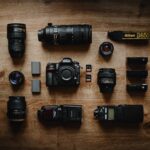As artificial intelligence (AI) continues to advance, many industries are seeing a shift in the way AI in art operate, and the art world is no exception. With the rise of AI-generated art, there has been much discussion around whether machines will eventually replace human artists. While some argue that AI-generated art is simply a tool to aid artists in their creative process, others believe that the technology poses a real threat to the future of art as we know it.
At the intersection of AI and art, there is a growing body of work that is generated entirely by computer programs. This generative artificial intelligence (AI) visual art is created using algorithms that are designed to produce high-quality images, video games, and even photorealistic works. While these images can be impressive, they lack the human interaction and aesthetic judgments that are essential to the creative process.
Despite the progress made in AI-generated art, existing artists are still a vital part of the art world. While machines may be able to produce an endless supply of images, they lack the context and creativity that comes with human artists. As such, AI-generated art is unlikely to replace artists, but rather work in a collaborative relationship with them.
Key Takeaways
- AI-generated art is a growing field that uses generative AI to create high-quality images and video games.
- While AI-generated art may lack the context and creativity of human artists, it can be a useful tool to aid artists in their creative process.
- Existing artists are still a vital part of the art world, and AI-generated art is unlikely to replace them, but rather work in a collaborative relationship with them.
The Intersection of AI and Art

Art has always been an expression of human creativity and imagination. However, with the advancement of technology, particularly in the field of artificial intelligence (AI), there has been a growing debate on the role of machines in art creation. In this section, we will explore the intersection of AI and art, specifically looking at the role of AI in art creation and the impact of AI on artists.
The Role of AI in Art Creation
AI has been used in various creative fields, including music, filmmaking, and graphic design. In the context of art, AI can generate art that mimics human creativity. AI-generated art is created using computer programs that use machine learning algorithms to analyze and learn from existing art. This technology can produce art that is photorealistic or fantastical, and it can create an endless supply of art.
AI in art is not a new concept. It has been around for decades, but recent advancements in AI technology have led to a stable diffusion of AI-generated art in the contemporary art world. AI-generated art has been used in installations, sculpture, and virtual reality experiences. It has also been used in concept art for video games and movies.
The Impact of AI on Artists
The rise of AI-generated art has led to concerns about the future of human artists. Some fear that AI-generated art will replace human artists, leading to a loss of jobs and a decline in artistic creativity. However, many experts believe that AI will not replace artists but will instead complement their creative processes.
AI-generated art can be seen as a tool for artists to explore new creative possibilities. AI can help artists generate new ideas, and it can provide them with an endless supply of inspiration. AI can also help artists save time and effort by automating certain aspects of the creative process.
In terms of legal issues, AI-generated art raises questions about copyright and ownership. Who owns the completed work of art, the artist or the machine? Additionally, AI-generated art raises questions about the aesthetic value of the art. Can AI-generated art be considered art in the traditional sense? These questions are still being debated in the art world.
In conclusion, AI has the potential to be a paradigm-shifting art form, but it is unlikely to replace human artists. AI-generated art is a tool that can help artists explore new creative possibilities and automate certain aspects of the creative process. While AI-generated art raises legal and aesthetic questions, it is clear that AI will continue to play a significant role in the art world.
The Future of AI in Art
As AI technology continues to progress, many questions arise about its potential impact on the art world. In this section, we will explore the potential of AI in art, as well as the challenges and ethical considerations that come with it.
The Potential of AI in Art
AI has the potential to revolutionize the art world in many ways. For example, AI-generated art can produce high-quality images and photorealistic works that were previously impossible to create. It can also create fantastical images that push the boundaries of what is possible with traditional art techniques. Additionally, AI can provide an endless supply of new ideas and inspiration for artists to work with.
AI can also be used to automate certain aspects of the creative process, freeing up artists to focus on more complex and creative tasks. For example, AI can be used to generate music or sound effects for video games and films, allowing composers to focus on melody, bass, and beat structurally, building block methods.
Also read: How to Make AI Art: A Step-by-Step Guide
The Challenges and Ethical Considerations
However, there are also challenges and ethical considerations to be aware of when it comes to AI in art. For example, there is a concern that AI-generated art will replace human artists, leading to a loss of jobs and competition in the art world. Additionally, there are concerns about the legal and ethical implications of using AI to create art.
One of the biggest challenges is determining who owns the copyright to AI-generated art. Since the computer program is responsible for creating the art, it is unclear whether the artist or the computer program should hold the copyright. This issue becomes even more complex when considering the role of human interaction in the creative process.
Another challenge is the question of aesthetic judgments. While AI can create high-quality images and music, it is unclear whether these creations have the same esthetic value as those created by human artists. Additionally, there is a concern that AI-generated art may lack the emotional depth and meaning that is often present in the work of human artists.
In conclusion, AI has the potential to be a paradigm-shifting art form, but there are still many questions that need to be answered. As we continue to explore the possibilities of AI in art, we must also consider the ethical and legal implications of this technology.
Frequently Asked Questions
Can AI art replace human creativity?
AI art has shown remarkable progress in generating images, music, and even literature. However, it is unlikely that AI art will replace human creativity entirely. While AI can generate art based on pre-existing data, it lacks the ability to create something truly novel. Human artists bring their unique perspective, emotions, and imagination to their work, which cannot be replicated by AI.
What are the limitations of AI in art?
AI art has certain limitations, primarily due to its reliance on pre-existing data. AI algorithms can only generate art based on the patterns they have learned from the data. They cannot create something entirely new or outside the scope of their training data. Additionally, AI lacks the ability to understand the cultural, historical, and social context in which art is created, which is an essential aspect of human art.
How can AI in art and human artists collaborate?
AI and human artists can collaborate in several ways. AI can assist human artists by generating ideas, providing inspiration, and speeding up the creative process. Human artists can also use AI tools to create new forms of art that were previously impossible. For example, AI-generated music can be used as a starting point for human composers to create new pieces. Similarly, AI-generated images can be used as a base for human artists to add their personal touch.
What are the potential benefits of AI in art?
AI has the potential to revolutionize the art world by enabling artists to create new forms of art that were previously impossible. AI can also assist in preserving and restoring artworks, making them accessible to a wider audience. Additionally, AI-generated art can be used to create immersive experiences, such as virtual reality art exhibitions.
What are the ethical implications of AI art?
AI art raises several ethical concerns, primarily related to ownership and authorship. Who owns the copyright of AI-generated art? Is it the AI algorithm, the human artist who trained it, or the person who pressed the “generate” button? Additionally, AI-generated art blurs the lines between human and machine creativity, which can have implications for our understanding of art and creativity.
Will AI art become the dominant form of art in the future?
It is unlikely that AI art will become the dominant form of art in the future. While AI has shown remarkable progress in generating art, it lacks the emotional depth and creativity that human artists bring to their work. Additionally, art is a reflection of human culture, history, and society, which cannot be replicated by AI. However, AI is likely to become an increasingly important tool for artists, enabling them to create new forms of art that were previously impossible.




![Best CRM for Nonprofits (Updated for [year]) 5 CRM for nonprofits](https://leoscale.co/wp-content/uploads/2023/11/CRM-for-nonprofits-150x150.jpg)
![15+ Best AI Background Remover in [year] AI Background Remover](https://leoscale.co/wp-content/uploads/2024/01/AI-Background-Remover-150x150.jpg)
![11+ Best AI Tools for Interview Preparations in [year] AI Interview Preparation](https://leoscale.co/wp-content/uploads/2024/01/AI-Interview-Preparation-150x150.jpg)
![Top 10 AI Tools for Learn Languages You Should Try [year] AI Tools for Learn Languages](https://leoscale.co/wp-content/uploads/2023/12/AI-Tools-for-Learn-Languages-150x150.jpg)

![13 Best AI Search Engines to Try Now in [year] AI Search Engine](https://leoscale.co/wp-content/uploads/2023/12/AI-Search-Engine-150x150.jpg)